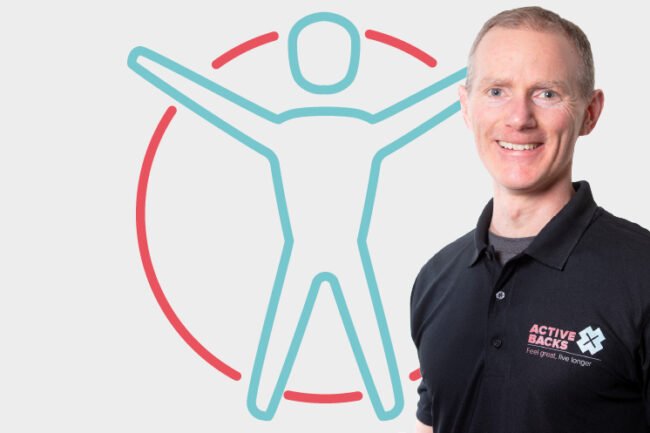Sitting on a sofa and low back pain / sciatica
Sitting on a sofa and low back pain / sciatica
This episode is entitled “Sitting on a sofa and low back pain / sciatica”, and it explores the reasons why these two are related. The points covered here are:
- Position
- Duration of sitting on a sofa affects your low back pain / sciatica
- Association
How does sitting on the sofa give you low back pain / sciatica?

Position
It’s incredibly important for a lot of people. If you have flection intolerant lower back pain / sciatica, your back pain is worse bending forwards. It’s highly likely that your bottom won’t tolerate sitting on a sofa for long. It’s all down to position. If you’re of average height or slightly taller, when you sit on a sofa your knees are probably higher than your hips. When this happens, the lower back ends up curved forward. You are flexing your lower back in that position. This is the positional element of being on a sofa. If your lower back doesn’t like bending forward, you’re probably flection intolerant. Sitting in a position where your back is constantly bent forward is not a good idea. Make sure your bottom is at least as high as your knees. Put a cushion underneath your bottom. and another one in the small of your lower back, to give you extra support and maintain the lumbar lordosis.
The duration of sitting on a sofa affects your low back pain / sciatica
It could be that you spend too much time on the sofa enjoying Netflix. There’s three types of loading, peak load, cumulative load, and sustained load. Sustained load means staying in a position for a long period of time. You might not think an hour is a long time to be sitting on the sofa, but you’re keeping your back in this sustained position of load, and after a while, it’s likely to pretest. Discomfort is your body’s way of telling you to stop doing it. Chances are sitting on the sofa, you’re not at that end range of motion, but you may be close to it. Remember the previous point about position. If you stay there for a prolonged period, that’d be half an hour or an hour, those tissues are slowly fatiguing.
Don’t sit there for a long time. If you are watching something with adverts, rather than just skipping ads, get up when the ads are on. Use them for a little bit of exercise mobility, whether that’s just getting up walking around a little bit or getting down on the floor, maybe do some cat, camel, your tail. There’s all sorts of movements to get through your lower back. Use the brakes or set a timer, or just make sure you’re not staying on the sofa for prolonged periods of time.
Association
The longer you have experienced lower back pain / sciatica while sitting, the more likely it is that you will start to associate sitting with pain. This association builds up over time. Some people associate their job with pain because every time they go to work, their bottom gets sore from sitting. It may not be the job itself. It may be this kind of mechanical aggravating factor of the seat itself.
Don’t get in a position where you associate an activity with pain, but if you do find yourself doing it, you can disassociate through a process called graded exposure. If you’re sitting on the sofa for five minutes and you’re fine, but if you sit for 10 minutes it starts to get sore, stick to five minutes initially. Then get up, move around for two minutes and go back and do another five minutes. Stay at the five minute dose for a few days, and then go up to seven minutes. You stay at that for a few days and you go up to 10 minutes. Slowly build up that duration of sitting. It works both at a neurological level and also at a mechanical level. You’re slowly conditioning your body to physically get used to sitting.


